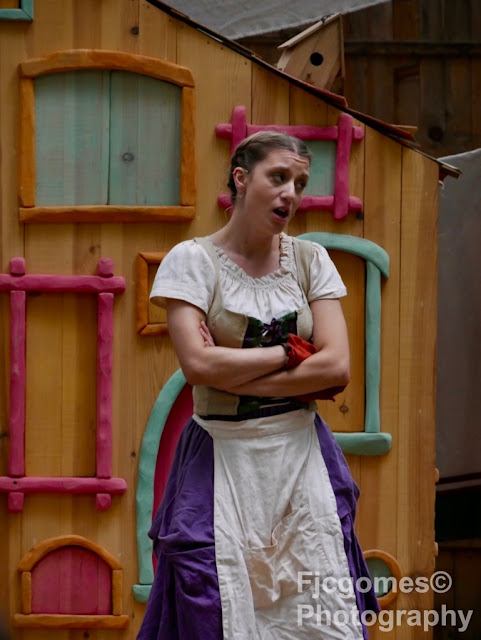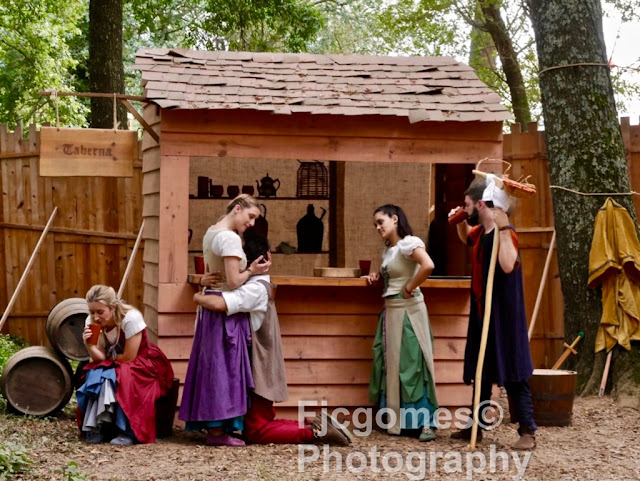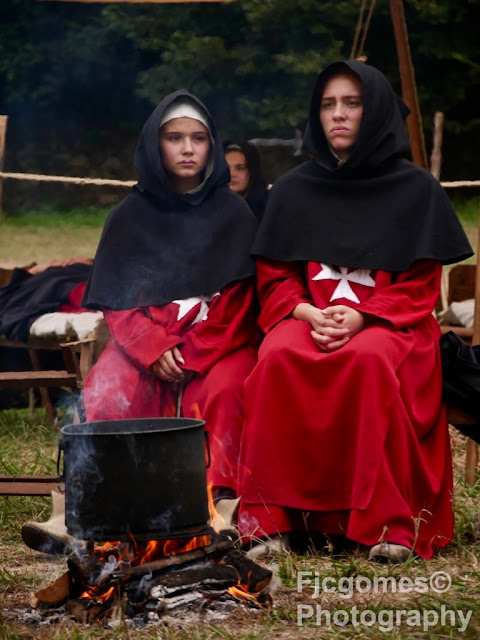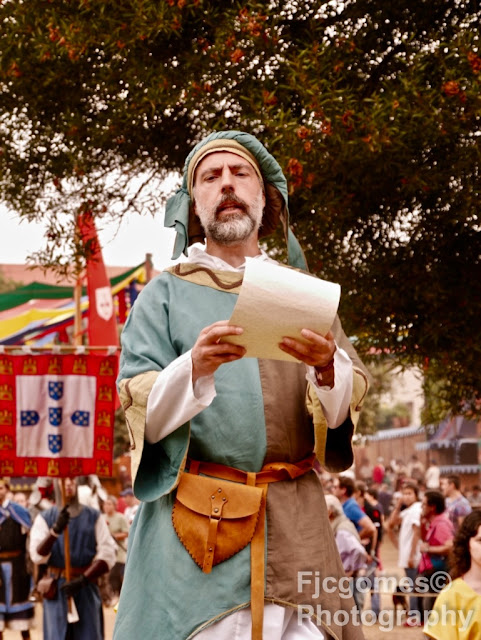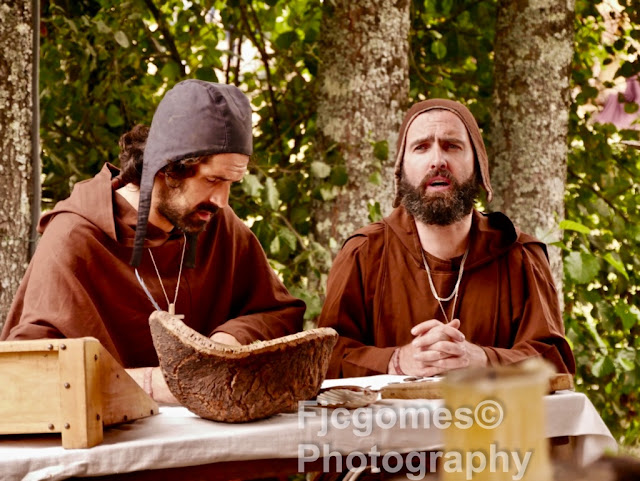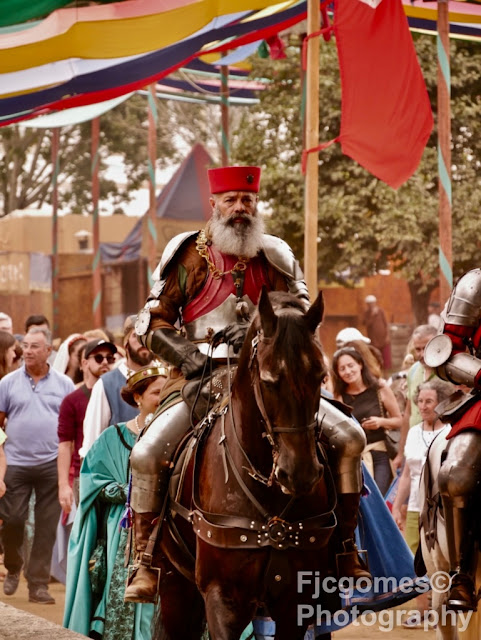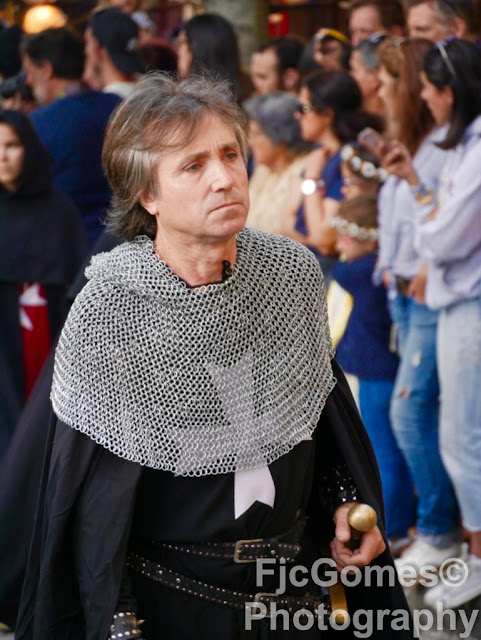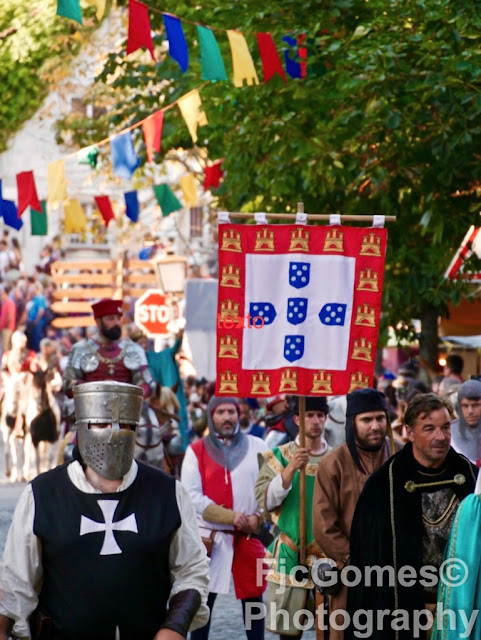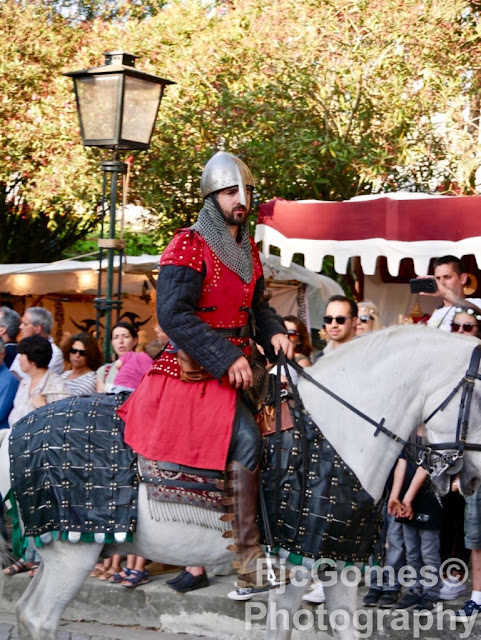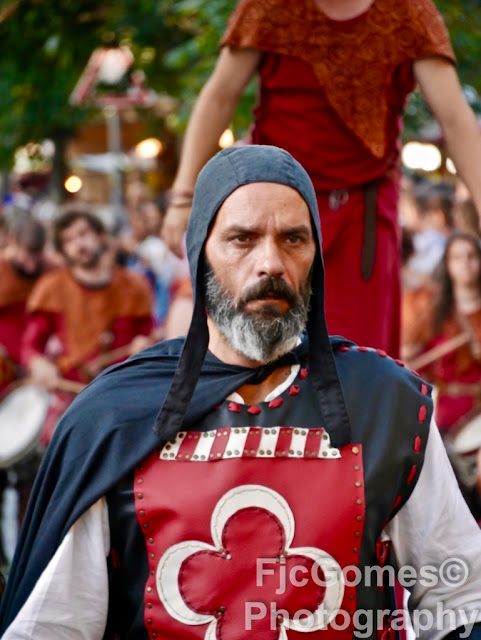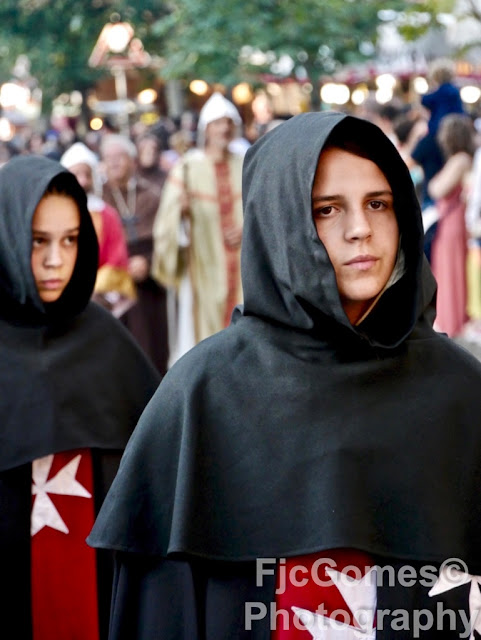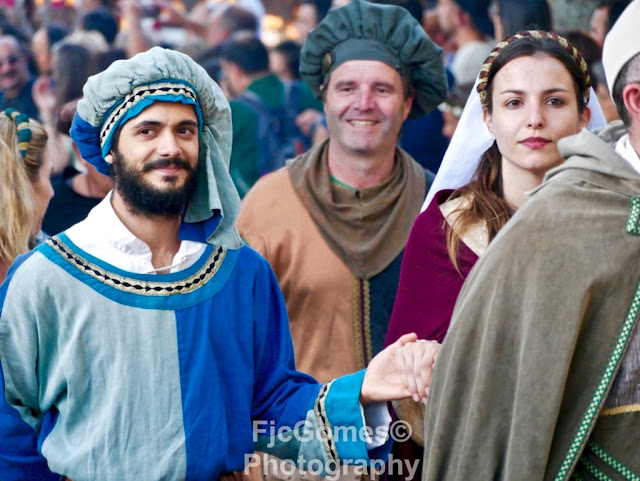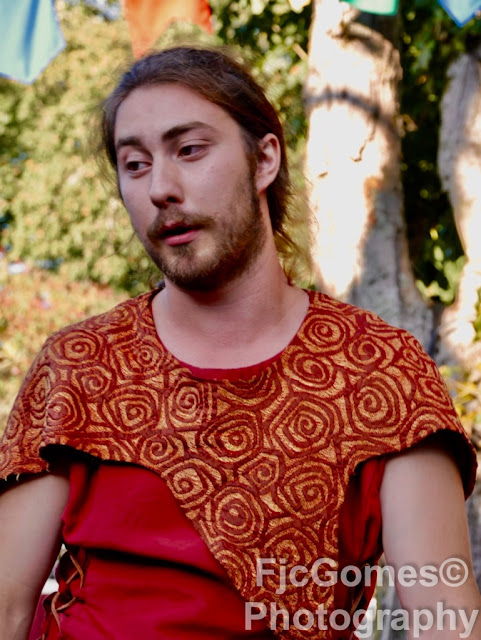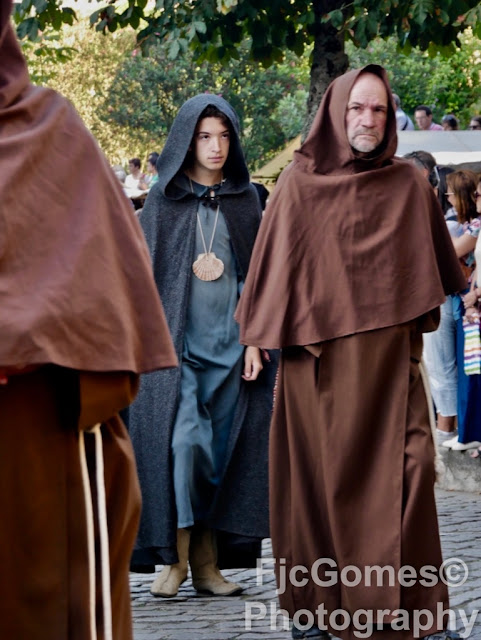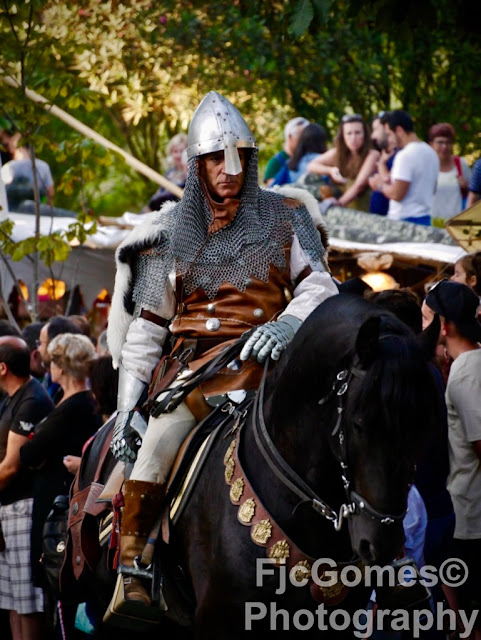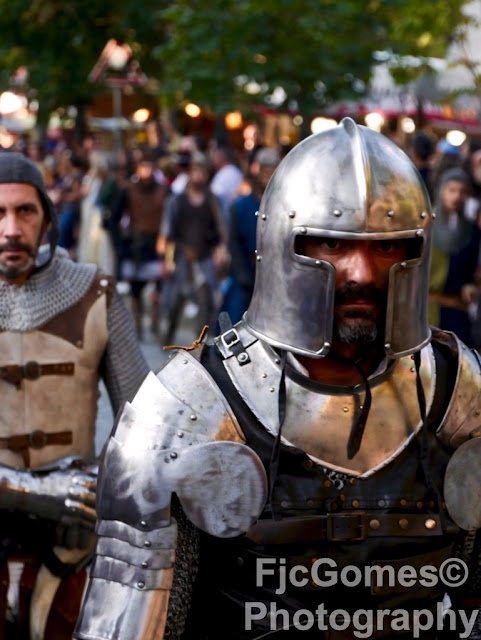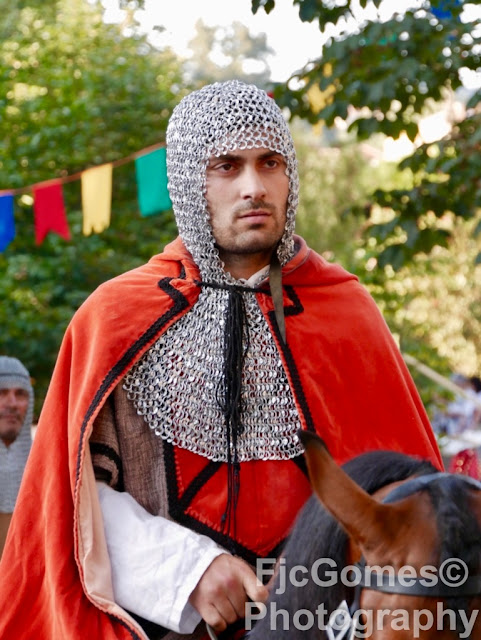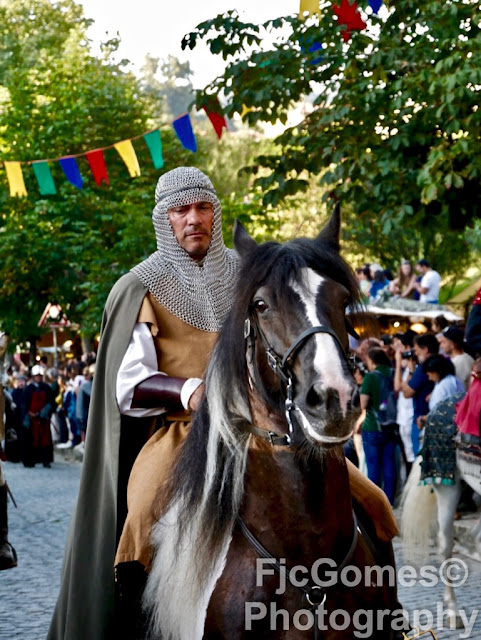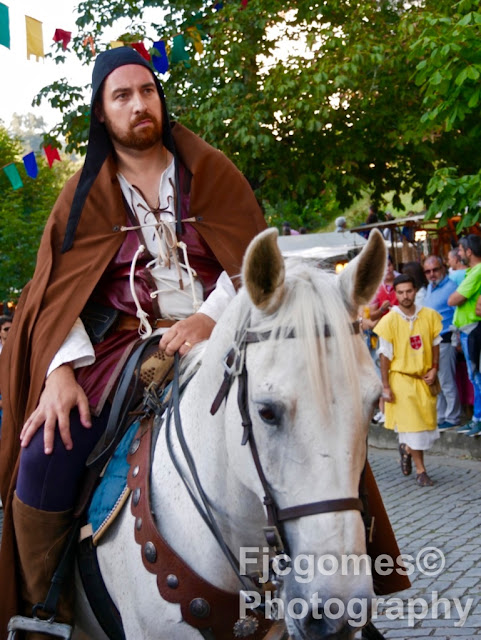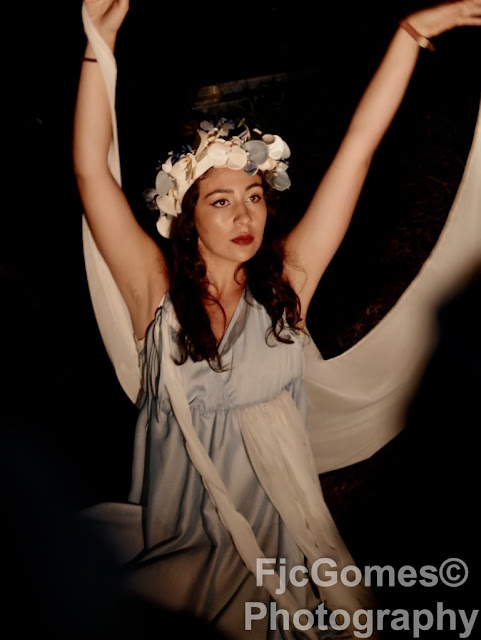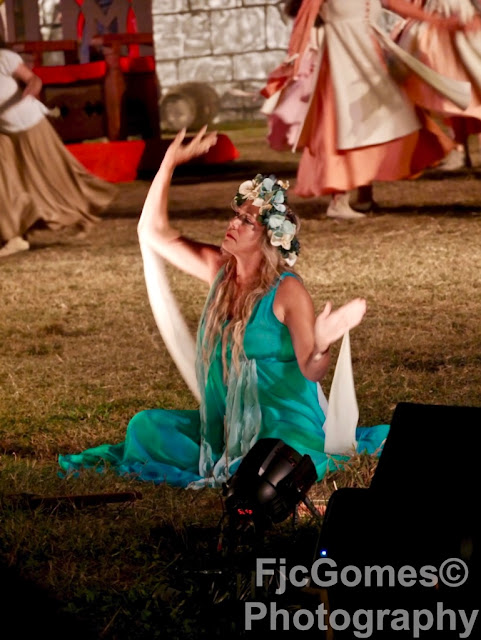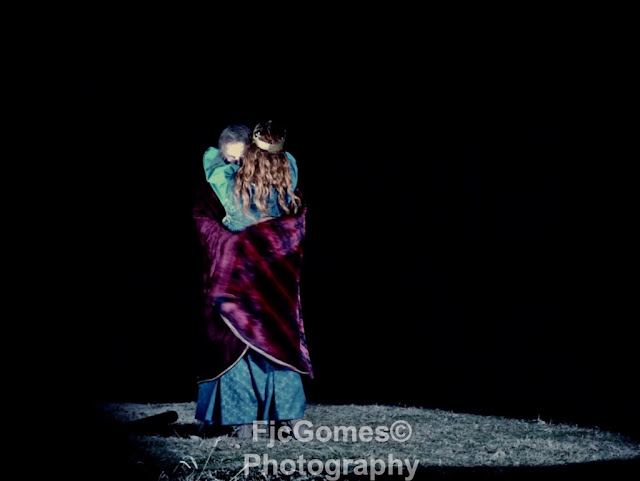Travel Photo Log
One Post, One Photo
terça-feira, 6 de agosto de 2019
Viagem Medieval em Terras de Santa Maria - 2019
At a time when great social and economic changes are taking place in the Western world, on the aftermath of the nefarious Black Death which had ripped the lives of many only two decades before, king Fernando, the Handsome, ascended the throne in 1367, named king of Portugal and the Algarve.
Despite these changes, the monarch was granted a peaceful kingdom and a wealthy treasure, which then enabled him to indulge his most refined pleasures, those commonly practiced by the European aristocracy, such as hunting and the latest fashions in art and culture.
Upon the death of Dom Pedro of Castile, and because of the succession crisis, Portugal began making war on this country, during three different stages. Dom Fernando claimed he was the indisputable heir to the Castilian throne, and therefore marched into conflict by invading Galicia, where he was acclaimed king in many lands for having a number of supporters in the region.
Although known for his inconstancy, Dom Fernando’s reign was notable for the state of peace it maintained, also having started a project alongside queen Dona Leonor Teles. He carried out the construction of walls and main buildings in several cities, he promulgated the Fallow Land Law, he created the Torre do Tombo National Archive and the Casa dos Contos Treasury, and he also founded the Carracks Company. With these measures, the king adapted the administration to the needs of present times.
Around 1379, there are reports of an attempted assassination carried out against Dom Fernando. It is believed that he was given venom in order to kill him. Consequently, the king was left with severe health problems, which then originated a turn in the government of the country. In turn, this event promoted the active participation of queen Dona Leonor Teles in the administration of the realm, although she was despised by the people.
Around 1379, there are reports of an attempted assassination carried out against Dom Fernando. It is believed that he was given venom in order to kill him. Consequently, the king was left with severe health problems, which then originated a turn in the government of the country. In turn, this event promoted the active participation of queen Dona Leonor Teles in the administration of the realm, although she was despised by the people.
Dom Fernando’s health slowly decayed until his death, in the year of 1383.
segunda-feira, 3 de abril de 2017
Bom Jesus do Monte Funicular
Construction on the tramway system began in April 1880, designed by Raul Mesnier du Ponsard, under the direction of Swiss engineer Nikolaus Riggenbach, and financed by Bracarense businessman Manuel Joaquim Gomes, the principal shareholder of the Companhia de Carris of Braga. Gomes was interested in replacing the role of the horsecar(rail vehicles pulled by horses), which originally stretched to the Bom Jesus sanctuary, but was complemented by oxen up the steep hill on busy days. The trams were constructed by SLM - Oficinas de Olten.
Work began in March 1880, with Portuguese engineer of French descent Raul Mesnier du Ponsard supervising the work. The funicular was inaugurated on 25 March 1882, and cost around 30 contos de réis. Its success was such that in the same year Mesnier was invited to design and install a series of funiculars and cable lifts in the Portuguese capital Lisbon, some of which are still in operation today.
In 1914, the Companhia de Carris was expropriated by the municipal council, resulting in the municipality exploiting the tourist transport. A campaign of restoration was carried out in 1946 using materials derived from the dismantling of a Mount Train, in the city of Funchal, on the island of Madeira.
But, by the 1970s-1980s, the funicular passed to the responsibility of the Confraria do Bom Jesus do Monte.
On 13 March 2003, a dispatch was issued to classify the funicular as national patrimony.
Following three months when the service was stopped for restoration, on 10 July 2006, the funicular returned to service.
On 18 October 2012, the decision to classify the funicular transport as a Monumento de Interesse Público .
quarta-feira, 28 de dezembro de 2016
quarta-feira, 31 de agosto de 2016
Subscrever:
Mensagens (Atom)
